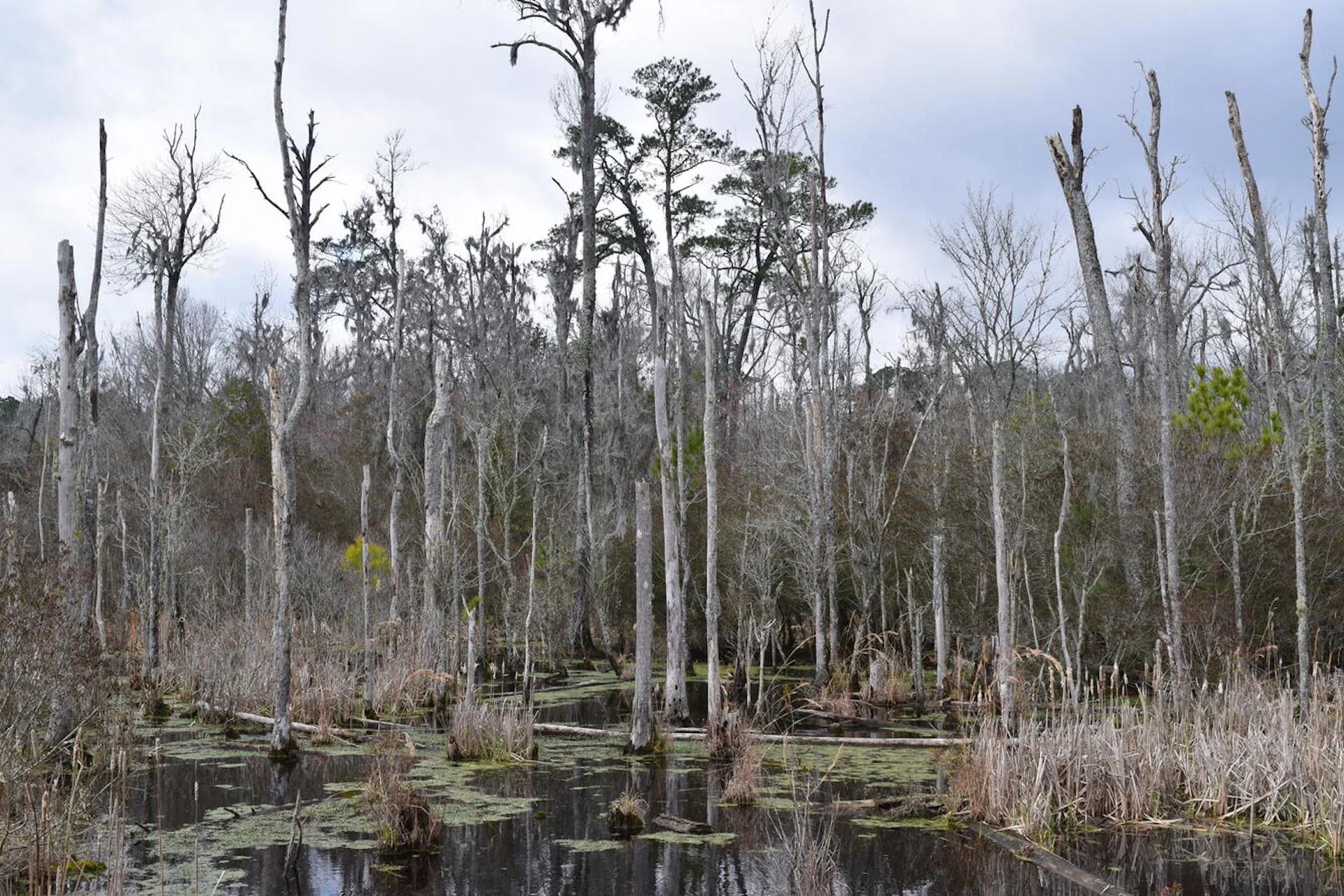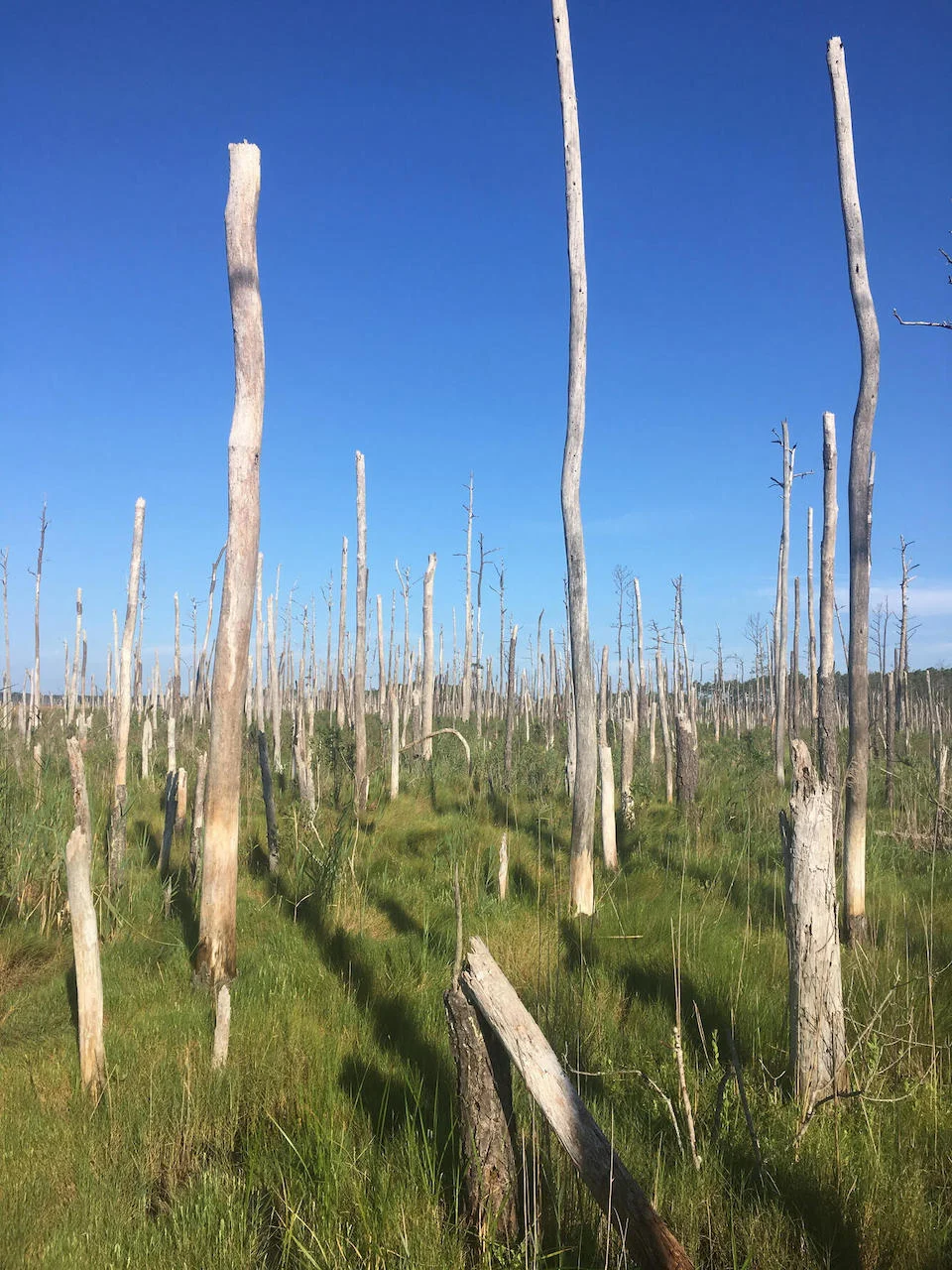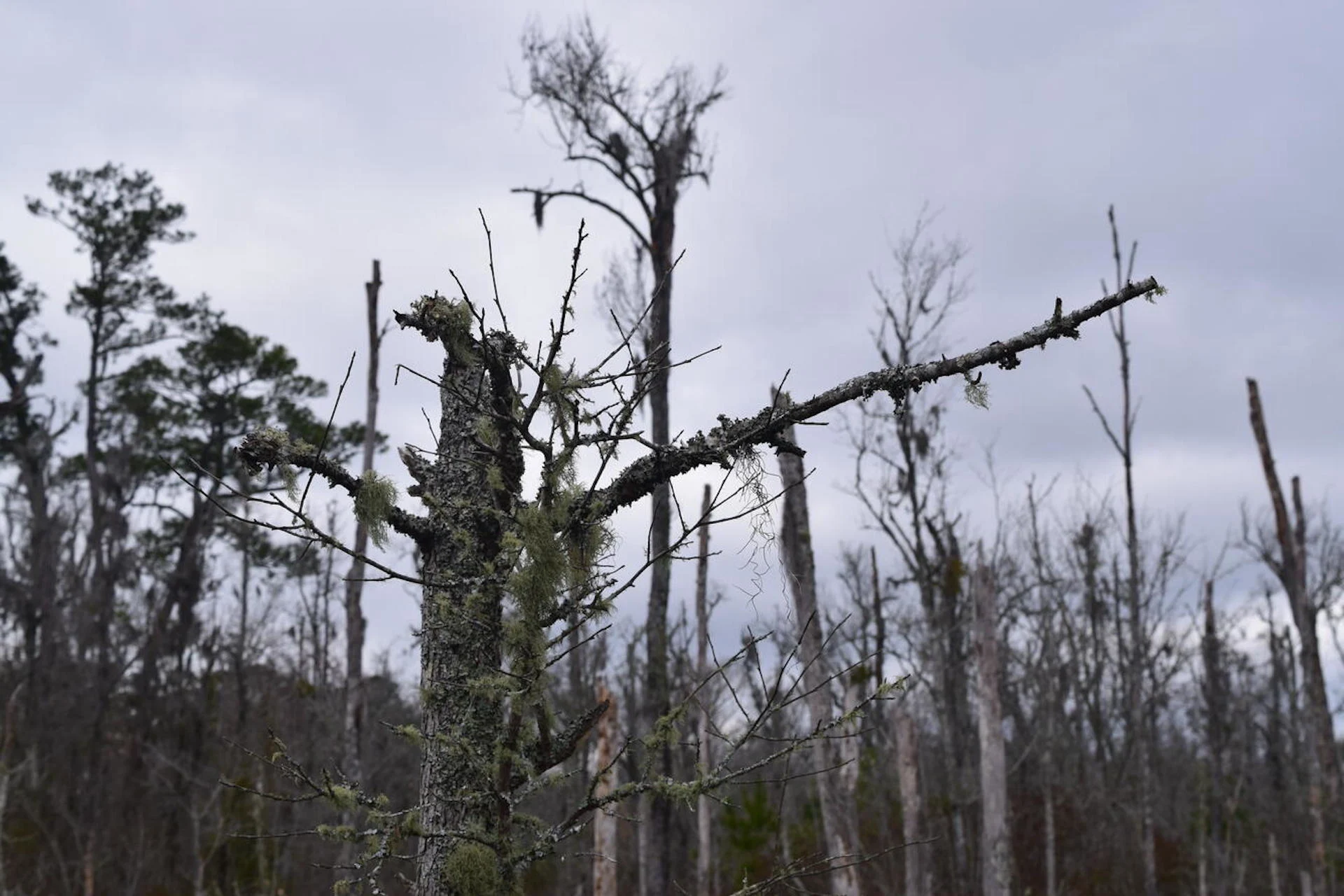
Ghost trees tell taxing story of sea level rise and extreme flooding
Ghost forests are among the numerous and visible impacts resulting from coastal flooding and sea level rise, and are prevalent along the U.S. East Coast
While the idea of ghost trees may sound like a Halloween tale, the causes behind their ghoulish-looking, but real, appearances are even scarier.
So, what are ghost trees, exactly? Well, they are the result of coastal trees failing to survive the stress levels brought on by a deluge of salt water or frequent periods of flooding. They can be converted into various types of natural landscapes such as marshes or open water.
DON'T MISS: Answer to high ocean acidity may lie in carbon transfer from wetlands
So, as the name hints at, they then leave remnants of their former ecosystems, according to the United States Geological Survey (USGS).
And it stands to reason there are ghost forests.
Scientists give them the moniker prior to the winds knocking over the leafless snags and their concealment from shrubs. A ghost forest is the "watery remains of a once verdant woodland," the National Oceanic and Atmospheric Administration (NOAA) says.

Ghost forest on the Delmarva Peninsula. (Kyle Derby/USGS).
"These eerie forests, filled with standing dead trees, tell a story on the effects of sea level rise and extreme flooding. And scientists with the USGS are investigating," USGS said in a recent news release.
USGS is investigating the trees
The organization is diving deep into the matter to understand how ghost forests factor into the influxes of greenhouse gases. To do that, USGS and its partners recently drilled into trees to examine what is inside them.
"Trees are known to naturally absorb and release gases, but there’s limited research on whether and how that process changes when coastal forests die," USGS said.
Where you can find the coastal ghost forests are in low-lying areas along the Eastern Seaboard where they are of particular concern, the USGS stated.

A ghost forest stands in Goose Creek State Park in North Carolina. This is an example of a freshwater, forested wetland that is transitioning to open water. (Melinda Martinez/USGS)
According to NOAA, ghost forests can be found from Maine to Florida, particularly in North Carolina where they are flourishing in parts of the state.
There are several areas that the USGS has projects in at the moment, including in the Delmarva Peninsula within the Chesapeake Bay. The region contains several low-sloped landscapes, which allow for rapid changes to occur, the American agency said.
To get more insight, USGS scientists are analyzing how and where the landscape shifts are happening across the country, not just along the Eastern Seaboard. The USGS and its partners are also working to predict what areas might be affected in the future, given the different sea level rise scenarios that are forecast as a result of climate change.
WATCH: Wetlands could hold the key to carbon sequestration in our oceans
Facts about ghost trees aren't all disturbing
Where it gets more interesting is that a recent study found that standing dead trees in ghost forests house small organisms that actually transform methane into carbon dioxide, a less potent greenhouse gas.
Findings of the study, led by Hollins University and coauthored by USGS, throw another wrench into the mystery of ghost forests as officials weigh the pros and cons for maintaining the landscapes, as well as the costs and benefits of conservation and restoration.

(Kyle Derby/USGS)
"Changes can lead to potentially positive or negative impacts. Healthy coastal forests provide numerous benefits such as supporting wildlife habitat, filtering pollutants and offering flood protection along coastlines, while marshes also provide species habitat, improve water quality and absorb floodwaters, among many other purposes," USGS said.
WATCH: 'Ghost gear': What it is and how it's affecting Canada's ocean life
Thumbnail courtesy of Melinda Martinez/USGS.
Follow Nathan Howes on X, formerly known as Twitter.












